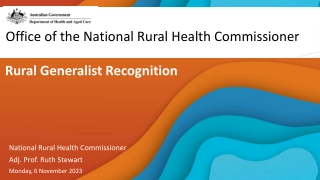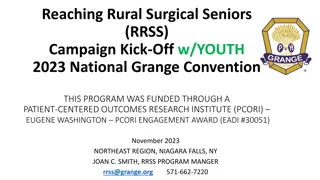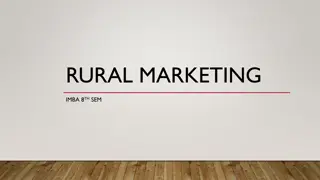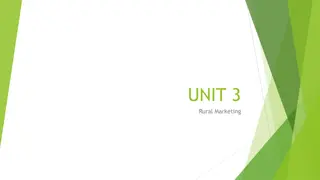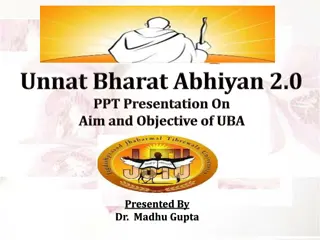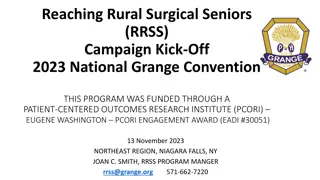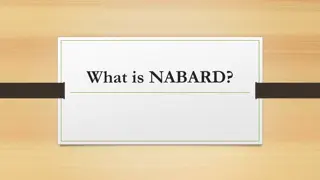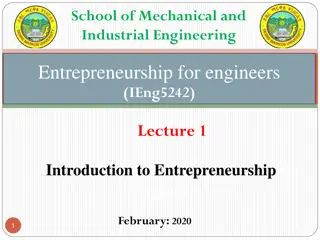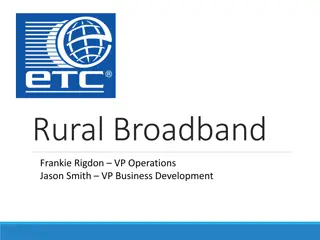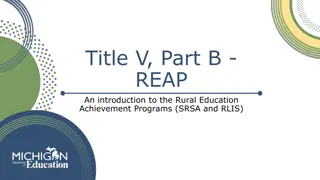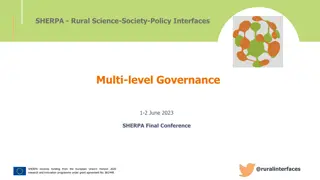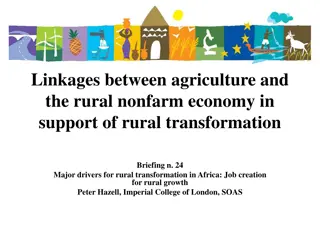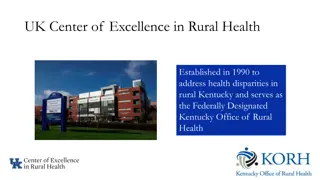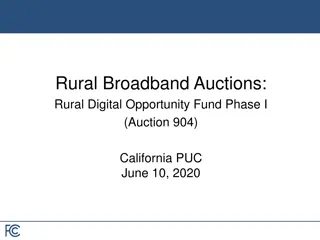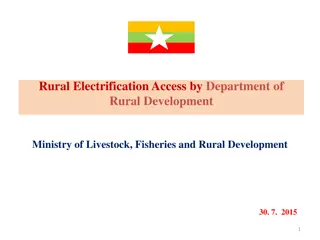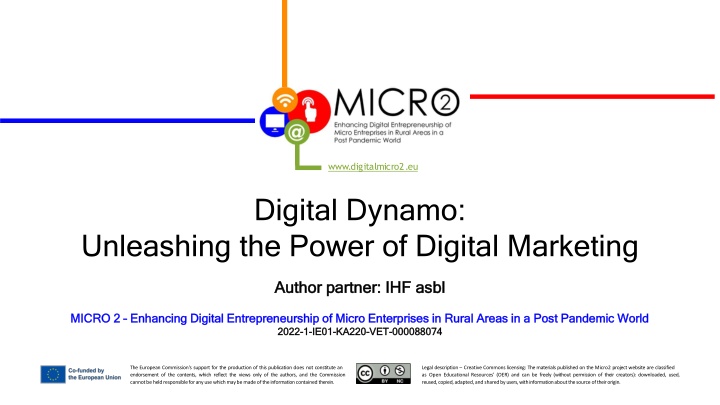
Enhancing Digital Entrepreneurship in Rural Areas Post Pandemic World
Dive into the world of digital marketing and entrepreneurship with the Digital Dynamo project by IHF asbl. Explore core principles, create comprehensive marketing plans, and boost lead generation strategies. Understand the role of digital communication in brand building and develop effective content strategies. Discover insights on building an online presence through practical examples and more. Unlock the power of digital in a post-pandemic era.
Download Presentation

Please find below an Image/Link to download the presentation.
The content on the website is provided AS IS for your information and personal use only. It may not be sold, licensed, or shared on other websites without obtaining consent from the author. If you encounter any issues during the download, it is possible that the publisher has removed the file from their server.
You are allowed to download the files provided on this website for personal or commercial use, subject to the condition that they are used lawfully. All files are the property of their respective owners.
The content on the website is provided AS IS for your information and personal use only. It may not be sold, licensed, or shared on other websites without obtaining consent from the author.
E N D
Presentation Transcript
www.digitalmicro2.eu www.digitalmicro2.eu Digital Dynamo: Unleashing the Power of Digital Marketing Author partner: IHF Author partner: IHF asbl asbl MICRO 2 MICRO 2 Enhancing Digital Entrepreneurship of Micro Enterprises in Rural Areas in a Post Pandemic World Enhancing Digital Entrepreneurship of Micro Enterprises in Rural Areas in a Post Pandemic World 2022 2022- -1 1- -IE01 IE01- -KA220 KA220- -VET VET- -000088074 000088074 The European Commission's support for the production of this publication does not constitute an endorsement of the contents, which reflect the views only of the authors, and the Commission cannotbeheldresponsibleforanyusewhichmaybemadeoftheinformationcontainedtherein. Legal description Creative Commons licensing: Thematerials published on the Micro2 project website are classified as Open Educational Resources' (OER) and can be freely (without permission of their creators): downloaded, used, reused,copied,adapted,andsharedbyusers,withinformationaboutthesourceoftheirorigin.
www.digitalmicro2.eu www.digitalmicro2.eu Objectives and Goals Objectives and Goals At the end of this module, you will be able to: At the end of this module, you will be able to: DIGITAL DIGITAL MARKETING MARKETING Understand the core principles and components of digital marketing Explore the functions of a comprehensive digital marketing plan aligned with business objective Implement strategies for lead generation and optimise conversion rates DIGITAL DIGITAL COMMUNICATION COMMUNICATION AND AND INTERACTION INTERACTION Comprehend the role of digital communication in marketing and brand building Choose the right social media platforms and tailor strategies accordingly Develop and implement effective editorial plans for content strategy The European Commission's support for the production of this publication does not constitute an endorsement of the contents, which reflect the views only of the authors, and the Commission cannotbeheldresponsibleforanyusewhichmaybemadeoftheinformationcontainedtherein. Legal description Creative Commons licensing: Thematerials published on the Micro2 project website are classified as Open Educational Resources' (OER) and can be freely (without permission of their creators): downloaded, used, reused,copied,adapted,andsharedbyusers,withinformationaboutthesourceoftheirorigin.
www.digitalmicro2.eu www.digitalmicro2.eu Index Index UNIT 1: Mastering Digital Marketing Strategies UNIT 2: Digital Communication and Interaction 1.1 Introduction to Digital Marketing 1.2 Developing a Digital Marketing Plan 1.3 Lead Generation Strategies 1.4 Conversion Optimisation 1.5 Customer Retention in the Digital Age 1.6 A Practical Example for Building an Online Presence: Google Business Profile 2.1 Introduction to Digital Communication 2.2 Interactive Communication Strategies 2.3 Choosing the Right Social Media Platforms 2.4 Crafting an Effective Editorial Plan 2.5 Integrating Digital Marketing and Communication Strategies The European Commission's support for the production of this publication does not constitute an endorsement of the contents, which reflect the views only of the authors, and the Commission cannotbeheldresponsibleforanyusewhichmaybemadeoftheinformationcontainedtherein. Legal description Creative Commons licensing: Thematerials published on the Micro2 project website are classified as Open Educational Resources' (OER) and can be freely (without permission of their creators): downloaded, used, reused,copied,adapted,andsharedbyusers,withinformationaboutthesourceoftheirorigin.
www.digitalmicro2.eu www.digitalmicro2.eu Unit 1: Mastering Digital Marketing Strategies Unit 1: Mastering Digital Marketing Strategies 1.1 Introduction to Digital Marketing (1) 1.1 Introduction to Digital Marketing (1) Digital Marketing utilises digital channels and tools such as the internet, mobile devices, social media and other digital means to promote brands and related goods products and services. Unlike and beside conventional marketing, digital marketing offers a unique set of tools, initiatives and opportunities that are exclusive to the online environment. Although in the early days of its popularity it might have been thought that digital marketing was only an online projection of traditional marketing, digital marketing is now acknowledged as an independent discipline with distinctive features and practices. Key Key and and characteristics characteristics aspects aspects of digital marketing: Branding Branding: Digital platforms provide an excellent opportunity to build and enhance brand image and identity Comprehensive Comprehensive Approach Approach: Share of links enables a wider and more customised approach to the target audience Global Global Reach global audience, breaking geographical barriers Reach: Unlike traditional marketing, digital strategies enable businesses, including those in rural areas, to reach a The European Commission's support for the production of this publication does not constitute an endorsement of the contents, which reflect the views only of the authors, and the Commission cannotbeheldresponsibleforanyusewhichmaybemadeoftheinformationcontainedtherein. Legal description Creative Commons licensing: Thematerials published on the Micro2 project website are classified as Open Educational Resources' (OER) and can be freely (without permission of their creators): downloaded, used, reused,copied,adapted,andsharedbyusers,withinformationaboutthesourceoftheirorigin.
www.digitalmicro2.eu www.digitalmicro2.eu Unit 1: Mastering Digital Marketing Strategies Unit 1: Mastering Digital Marketing Strategies 1.1 Introduction to Digital Marketing (1) 1.1 Introduction to Digital Marketing (1) Personalisation Personalisation: Digital marketing allows businesses to tailor content and interactions based on individual preferences and behaviours User User- -Friendly Friendly Design Design and and Functionality Functionality: Simple and user-friendly platforms contribute to a positive user experience (UX/UI UX/UI) Interactive Interactive Engagement experience Engagement: Digital environment allows users to actively react and engage with brands, fostering a positive brand Community Community: Again, internet facilitates strong connections between organisations and their audiences Visual Visual Storytelling Storytelling: Various image- and video-based tools enrich the overall brand and related product communication Virality Virality: Interconnectedness on the internet allows for a possible exponential expansion and sharing of valuable content Performance Performance Analytics assessment of strategies and campaign performance Analytics: Online platforms and tools offer tracking and data analytics options, allowing for comprehensive The European Commission's support for the production of this publication does not constitute an endorsement of the contents, which reflect the views only of the authors, and the Commission cannotbeheldresponsibleforanyusewhichmaybemadeoftheinformationcontainedtherein. Legal description Creative Commons licensing: Thematerials published on the Micro2 project website are classified as Open Educational Resources' (OER) and can be freely (without permission of their creators): downloaded, used, reused,copied,adapted,andsharedbyusers,withinformationaboutthesourceoftheirorigin.
www.digitalmicro2.eu www.digitalmicro2.eu Unit 1: Mastering Digital Marketing Strategies Unit 1: Mastering Digital Marketing Strategies 1.2 Developing a Digital Marketing Plan (1) 1.2 Developing a Digital Marketing Plan (1) A Digital Marketing Plan represents a strategic document outlining and organisation s objectives and the related strategies to achieve them in terms of digital marketing and communication. It encompasses roles, responsibilities, timelines and monitoring tools for an effective implementation and evaluation of digital marketing strategies. While sharing similarities with the traditional marketing plan, a digital marketing plan distinguishes itself operationally. It enables real-time measurement and the formulation of a flexible short-term strategy, emphasising an iterative process between action and control. This operational difference stems from the ease with which digital marketing enables continuous evaluation of strategies through the analysis of audience interactions and reactions. The direct relationship with the audience eliminates the need to wait for the results of sales of products or services, moving towards a continuous evaluation rather than an after-the-fact one. In other words, the focus shifted from final evaluation to Ongoing Assessment Ongoing Assessment The European Commission's support for the production of this publication does not constitute an endorsement of the contents, which reflect the views only of the authors, and the Commission cannotbeheldresponsibleforanyusewhichmaybemadeoftheinformationcontainedtherein. Legal description Creative Commons licensing: Thematerials published on the Micro2 project website are classified as Open Educational Resources' (OER) and can be freely (without permission of their creators): downloaded, used, reused,copied,adapted,andsharedbyusers,withinformationaboutthesourceoftheirorigin.
www.digitalmicro2.eu www.digitalmicro2.eu Unit 1: Mastering Digital Marketing Strategies Unit 1: Mastering Digital Marketing Strategies 1.2 Developing a Digital Marketing Plan (2) 1.2 Developing a Digital Marketing Plan (2) Key Key steps steps for the development of a digital marketing plan: Analysis Phase Analysis Phase Goal Setting Goal Setting Strategy Formulation Strategy Formulation Tactical Planning Tactical Planning Ongoing Assessment Ongoing Assessment Organisational Foundations (mission, vision, values) S.M.A.R.T. Criteria Alignment (specific, measurable, assignable, realistic, time-related) Task Scheduling KPIs A.I.D.A. Model Incorporation (Awareness, Interest, Desire, Action) Time Scheduling Audience Interaction and Feedback Systems Roles and Responsibilities Allocation SWOT Analysis (strengths, weaknesses, threats, opportunities) Tools and Strategies Data Analytics Criteria Flexibility and Adaptability Resources Allocation Monitoring Tools Online Presence and Geographical Impact Analysis Segment and Target Audience Definition The European Commission's support for the production of this publication does not constitute an endorsement of the contents, which reflect the views only of the authors, and the Commission cannotbeheldresponsibleforanyusewhichmaybemadeoftheinformationcontainedtherein. Legal description Creative Commons licensing: Thematerials published on the Micro2 project website are classified as Open Educational Resources' (OER) and can be freely (without permission of their creators): downloaded, used, reused,copied,adapted,andsharedbyusers,withinformationaboutthesourceoftheirorigin.
www.digitalmicro2.eu www.digitalmicro2.eu Unit 1: Mastering Digital Marketing Strategies Unit 1: Mastering Digital Marketing Strategies 1.3 Lead Generation Strategies (1) 1.3 Lead Generation Strategies (1) Lead Generation Lead Generation Conversion Conversion Retention Retention Introductive Introductive overview It initiates the process of connecting with potential customers and forms the foundation for a comprehensive digital marketing strategy. In the upcoming sections, the subsequent phases will be explored: conversion and retention. overview: Lead Generation serves as the key starting point for engaging with the audience in their customer journey. Specifically, lead generation strategy represents the first contact with potential customers through the involvement of meticulous acquisition of their contact data and details. When well-structured, lead generation offers several several advantages advantages: Filling the sales pipeline with potential leads Establishing and leveraging an email distribution list Identifying high-quality prospects for targeted marketing and sales efforts Collecting and analysing data to glean valuable insights into the demographic traits, preferences, and behaviour of the target The European Commission's support for the production of this publication does not constitute an endorsement of the contents, which reflect the views only of the authors, and the Commission cannotbeheldresponsibleforanyusewhichmaybemadeoftheinformationcontainedtherein. Legal description Creative Commons licensing: Thematerials published on the Micro2 project website are classified as Open Educational Resources' (OER) and can be freely (without permission of their creators): downloaded, used, reused,copied,adapted,andsharedbyusers,withinformationaboutthesourceoftheirorigin.
www.digitalmicro2.eu www.digitalmicro2.eu Unit 1: Mastering Digital Marketing Strategies Unit 1: Mastering Digital Marketing Strategies 1.3 Lead Generation Strategies (2) 1.3 Lead Generation Strategies (2) Here are effective techniques to incorporate into your lead generation strategy: Landing Landing Pages Pages: : Design effective landing pages, ensuring they are designed to seamlessly convert prospects into leads Forms Forms: : Implement streamlined lead generation forms to collect crucial prospect information efficiently Quality Quality Content capturing the interest of your target audience Content: : Develop craft high-quality, relevant content that aligns with your business expertise and brand image, Live Live Chat addressing queries promptly Chat or or Chatbot Chatbot: : Integrate live chat or chatbot functionality to facilitate immediate interaction, providing assistance and Advertisements Advertisements (Ads) (Ads): : Advertise your brand to broaden your reach and capture the attention of potential leads Contest Contest / / Giveaway for data and leads Giveaway / / Referral Referral Programme Programme: Create initiatives that aim at broad participation by offering a reward in exchange Reviews Reviews: : Actively stimulate and encourage the publication of positive reviews, as they play a pivotal role in building credibility Remarketing Remarketing: : Employ strategies to re-engage users who have previously visited your website or social media, converting them into leads The European Commission's support for the production of this publication does not constitute an endorsement of the contents, which reflect the views only of the authors, and the Commission cannotbeheldresponsibleforanyusewhichmaybemadeoftheinformationcontainedtherein. Legal description Creative Commons licensing: Thematerials published on the Micro2 project website are classified as Open Educational Resources' (OER) and can be freely (without permission of their creators): downloaded, used, reused,copied,adapted,andsharedbyusers,withinformationaboutthesourceoftheirorigin.
www.digitalmicro2.eu www.digitalmicro2.eu Unit 1: Mastering Digital Marketing Strategies Unit 1: Mastering Digital Marketing Strategies 1.4 Conversion Optimisation 1.4 Conversion Optimisation Once potential customers have been identified and engaged, the focus shifts to systematically guiding them towards desired actions, such as become leads or making a purchase (buyers). This critical phase, known as the Conversion the efforts invested in marketing and attracting prospects translate into concrete interactions and tangible outcomes, contributing to business growth and success. Conversion Phase Phase, ensures that To enhance conversions, a structured conversion research process is essential. This process identifies existing issues, their nature, and the rationale for addressing them. Conversion Conversion Rate Rate Optimisation Optimisation (CRO) (CRO): Definition Definition: A systematic approach to maximise the percentage of visitors on a business website accomplishing a specific goal Benefits Benefits: Ensures the website is visually appealing, user-friendly, and tailored to the needs of customers Result Result: Increased likelihood of converting engaged prospects into valuable leads or customers In the realm of conversion optimisation, businesses refine their strategies to create a seamless journey from initial engagement to meaningful customer actions. The European Commission's support for the production of this publication does not constitute an endorsement of the contents, which reflect the views only of the authors, and the Commission cannotbeheldresponsibleforanyusewhichmaybemadeoftheinformationcontainedtherein. Legal description Creative Commons licensing: Thematerials published on the Micro2 project website are classified as Open Educational Resources' (OER) and can be freely (without permission of their creators): downloaded, used, reused,copied,adapted,andsharedbyusers,withinformationaboutthesourceoftheirorigin.
www.digitalmicro2.eu www.digitalmicro2.eu Unit 1: Mastering Digital Marketing Strategies Unit 1: Mastering Digital Marketing Strategies 1.5 Customer Retention in the Digital Age (1) 1.5 Customer Retention in the Digital Age (1) Customer Retention goes beyond merely keeping customers close, it is about cultivating lasting relationships to transform customers into steadfast brand advocates a sort of brand ambassadors. Key Key factors factors influencing customer retention: Psychological Psychological Foundations This involves understanding the intricacies of human behaviour, emotions, and perceptions Foundations: Retention skills delve into psychology, akin to unravelling the secrets of enduring relationships. Emotional Emotional Bonds catering to their emotional needs fosters loyalty and long-term commitment Bonds: Successful retention hinges on establishing emotional connections with customers. Recognising and Behavioural Behavioural Analysis driving forces that nurture loyalty Analysis: By dissecting the psychological motivations behind customer loyalty, businesses gain insights into the The European Commission's support for the production of this publication does not constitute an endorsement of the contents, which reflect the views only of the authors, and the Commission cannotbeheldresponsibleforanyusewhichmaybemadeoftheinformationcontainedtherein. Legal description Creative Commons licensing: Thematerials published on the Micro2 project website are classified as Open Educational Resources' (OER) and can be freely (without permission of their creators): downloaded, used, reused,copied,adapted,andsharedbyusers,withinformationaboutthesourceoftheirorigin.
www.digitalmicro2.eu www.digitalmicro2.eu Unit 1: Mastering Digital Marketing Strategies Unit 1: Mastering Digital Marketing Strategies 1.5 Customer Retention in the Digital Age (2) 1.5 Customer Retention in the Digital Age (2) Strategies Strategies for Customer Retention: Personalised Engagement Personalised Engagement: Tailoring interactions based on individual preferences and behaviours Effective Communication Effective Communication: Regular and meaningful communication to stay connected and address customer concerns Loyalty Programmes Loyalty Programmes: Incentivising repeat business through rewards, discounts, or exclusive offers Feedback Loop Feedback Loop: Encouraging customer feedback and using it to enhance products or services Community Building Community Building: Creating a sense of belonging and community around the brand Focus Focus on potential local brand ambassadors. This local influence, coupled with digital strategies like online reviews, allows rural businesses to extend their impact beyond local boundaries. Customer retention thus becomes a dual strategy, solidifying the business within the local community while leveraging the digital space to reach a wider audience through the advocacy of retained customers. on Microenterprises Microenterprises in in Rural Rural A Areas reas: In this context, a retained customer not only ensures repeat business but also transforms them into The European Commission's support for the production of this publication does not constitute an endorsement of the contents, which reflect the views only of the authors, and the Commission cannotbeheldresponsibleforanyusewhichmaybemadeoftheinformationcontainedtherein. Legal description Creative Commons licensing: Thematerials published on the Micro2 project website are classified as Open Educational Resources' (OER) and can be freely (without permission of their creators): downloaded, used, reused,copied,adapted,andsharedbyusers,withinformationaboutthesourceoftheirorigin.
www.digitalmicro2.eu www.digitalmicro2.eu Unit 1: Mastering Digital Marketing Strategies Unit 1: Mastering Digital Marketing Strategies 1.6 A Practical Example for Building an Online Presence: Google Business Profile 1.6 A Practical Example for Building an Online Presence: Google Business Profile Stand Stand out out on on Google Google with with a a Business Business Profile Profile Google Business Profile is a powerful tool for establishing and enhancing the business online presence. It serves as a virtual storefront, providing essential information (name, address, number, directions, photos, opening hours, website, reviews, etc.) about a business to potential consumers. How How Google Google Business Business Profile Profile Benefits Benefits Rural Rural Microenterprises Microenterprises: : Local Local Discoverability Discoverability: People in the vicinity can easily find a business when searching for relevant products or services Community Community Connection builds a sense of community support, vital for microenterprises in rural settings Connection: Engaging with customers through Google Business Profile Mobile Mobile Accessibility Accessibility: Many users in rural areas rely on mobile devices. Google Business Profile ensures a business is accessible to them, even in areas with limited online resources Source Source: Google Business Profile Overview The European Commission's support for the production of this publication does not constitute an endorsement of the contents, which reflect the views only of the authors, and the Commission cannotbeheldresponsibleforanyusewhichmaybemadeoftheinformationcontainedtherein. Legal description Creative Commons licensing: Thematerials published on the Micro2 project website are classified as Open Educational Resources' (OER) and can be freely (without permission of their creators): downloaded, used, reused,copied,adapted,andsharedbyusers,withinformationaboutthesourceoftheirorigin.
www.digitalmicro2.eu www.digitalmicro2.eu Unit 2: Digital Communication and Interaction Unit 2: Digital Communication and Interaction 2.1 Introduction to Digital Communication 2.1 Introduction to Digital Communication Digital Communication acts as the conduit for the seamless exchange of data and information facilitated by digital technologies and platforms. This enables real-time interaction, instant messaging, video conferencing, and the seamless sharing of multimedia content across vast distances. Critical elements of digital communication include instantaneous interaction, seamless multimedia integration, a harmonious blend of both asynchronous and synchronous communication, heightened accessibility and convenience, collaborative co- creation, meticulous data preservation and archiving, scalable reach, a global footprint, and seamless integration with other cutting-edge technologies. Together, these elements form the pillars of a robust digital digital communication communication framework framework. Focus Focus on community engagement. Microenterprises, often situated in rural settings, can utilise digital platforms to maintain connections with their local (and not) customer base. on Microenterprises Microenterprises in in Rural Rural A Areas reas: Digital communication represents a precious tool to overcome geographical barriers and foster Imagine a local artisan in a rural area using social media and digital communication to showcase their traditional craftsmanship through multimedia content. This not only preserves the cultural heritage of the community but also opens doors for global appreciation and market. Digital communication enables microenterprises to not only stay connected locally but also expand their reach and visibility on a broader scale. The European Commission's support for the production of this publication does not constitute an endorsement of the contents, which reflect the views only of the authors, and the Commission cannotbeheldresponsibleforanyusewhichmaybemadeoftheinformationcontainedtherein. Legal description Creative Commons licensing: Thematerials published on the Micro2 project website are classified as Open Educational Resources' (OER) and can be freely (without permission of their creators): downloaded, used, reused,copied,adapted,andsharedbyusers,withinformationaboutthesourceoftheirorigin.
www.digitalmicro2.eu www.digitalmicro2.eu Unit 2: Digital Communication and Interaction Unit 2: Digital Communication and Interaction 2.2 Interactive Communication Strategies (1) 2.2 Interactive Communication Strategies (1) A comprehensive digital communication strategy entails careful planning for online communication, emphasising the dynamic interplay between two key key elements elements: Content Content / / Product articles, webinars, e-books, podcasts, as well as showcasing products and services, etc. Product: This encompasses the core of the communication, e.g. incorporating persuasive texts, photos, videos, Digital Digital Channels Channels: These serve as the tools utilised to share and promote the content or product, ensuring effective reach An effective strategy not only allows to reach the audience but also fosters interaction with them, employing the methodology of interactive communication. Interactive Communication, facilitated through digital tools and technology, serves as a mechanism for businesses to establish seamless and engaging connections with their audience. It involves one-on-one conversations, distinguishing itself from traditional communication by creating a feedback loop, making it exceptionally effective. The European Commission's support for the production of this publication does not constitute an endorsement of the contents, which reflect the views only of the authors, and the Commission cannotbeheldresponsibleforanyusewhichmaybemadeoftheinformationcontainedtherein. Legal description Creative Commons licensing: Thematerials published on the Micro2 project website are classified as Open Educational Resources' (OER) and can be freely (without permission of their creators): downloaded, used, reused,copied,adapted,andsharedbyusers,withinformationaboutthesourceoftheirorigin.
www.digitalmicro2.eu www.digitalmicro2.eu Unit 2: Digital Communication and Interaction Unit 2: Digital Communication and Interaction 2.2 Interactive Communication Strategies (2) 2.2 Interactive Communication Strategies (2) Incorporating interactive communication within the digital strategy involves implementing dynamic dynamic strategies strategies, such as: Social Social Media Media Engagement Engagement: Actively participating and engaging with the audience on various social media platforms Instant Instant and and Direct Direct Messages Messages: Facilitating real or near-real-time interaction for swift information sharing Interactive Interactive Live pages or information they seek Live Chat Chat and and Chatbots Chatbots: Leveraging pre-made scripts, these prove invaluable in guiding web visitors to the specific Live Live and audience and Virtual Virtual Events Events: Hosting live or online events to share knowledge, showcase products, and connect with a wider Surveys Surveys and communication accordingly and Polls Polls: Seeking feedback through interactive surveys or polls to understand customer preferences and tailor Email Email Marketing Marketing Campaigns and provide valuable content to the audience Campaigns: Implementing personalised and targeted email campaigns to maintain regular communication The European Commission's support for the production of this publication does not constitute an endorsement of the contents, which reflect the views only of the authors, and the Commission cannotbeheldresponsibleforanyusewhichmaybemadeoftheinformationcontainedtherein. Legal description Creative Commons licensing: Thematerials published on the Micro2 project website are classified as Open Educational Resources' (OER) and can be freely (without permission of their creators): downloaded, used, reused,copied,adapted,andsharedbyusers,withinformationaboutthesourceoftheirorigin.
www.digitalmicro2.eu www.digitalmicro2.eu Unit 2: Digital Communication and Interaction Unit 2: Digital Communication and Interaction 2.3 Choosing the Right Social Media Platform (1) 2.3 Choosing the Right Social Media Platform (1) Focusing on Social Media, here are key key steps steps to guide a business on how to choose the right social media platform: 1. 1. Identification Identification of of Target essential. This knowledge shapes the type of content and dictates the most effective platform for engagement Target Audience Audience: Understanding the demographic and psychographic details of the target audience is 2. 2. Analysis Analysis of of Different based on demographics, engagement levels, content formats, copywriting styles, and advertising options. Examples include: Different Social Social Media Media Platforms Platforms: Once the target audience is identified, businesses should evaluate platforms Facebook Facebook: Widely used with diverse demographics; suitable for visual content and detailed copy Instagram Instagram: Appeals to a younger audience; highly visual platform, ideal for image and video-based content TikTok TikTok: Ideal for trend-focuses audience; interesting for promoting brands through creative and entertaining content X X: Fast-paced; suitable for brief, concise updates and real-time engagement LinkedIn LinkedIn: Professional network; best for B2B engagement and industry-related content 3. 3. Evaluation Evaluation of of Business with the achievement of the specific business goals Business Goals Goals: With so many social media platforms available, it can take time to determine which better suite The European Commission's support for the production of this publication does not constitute an endorsement of the contents, which reflect the views only of the authors, and the Commission cannotbeheldresponsibleforanyusewhichmaybemadeoftheinformationcontainedtherein. Legal description Creative Commons licensing: Thematerials published on the Micro2 project website are classified as Open Educational Resources' (OER) and can be freely (without permission of their creators): downloaded, used, reused,copied,adapted,andsharedbyusers,withinformationaboutthesourceoftheirorigin.
www.digitalmicro2.eu www.digitalmicro2.eu Unit 2: Digital Communication and Interaction Unit 2: Digital Communication and Interaction 2.3 Choosing the Right Social Media Platform (2) 2.3 Choosing the Right Social Media Platform (2) 4. 4. Consideration Consideration of of Resources Resources: A business need to consider its available resources, including: Budget Budget: Different social media platforms have different maintenance and adv costs Team Team size size: Focusing on one or two platforms may be more efficient than maintaining a presence on multiple platforms Skills Skills and and engagement and expertise expertise of of the the team team: : Evaluating which platforms align with their strengths, ensuring optimal content creation Time Time and and effort effort: Prioritising the right social media platforms allows to maximise the return of investment 5. 5. Determination Determination of of Social implementing a monitoring and measurement system are essential to track and optimize results Social Media Media Strategy Strategy: Defining goals, researching competitors, developing content strategies, and The European Commission's support for the production of this publication does not constitute an endorsement of the contents, which reflect the views only of the authors, and the Commission cannotbeheldresponsibleforanyusewhichmaybemadeoftheinformationcontainedtherein. Legal description Creative Commons licensing: Thematerials published on the Micro2 project website are classified as Open Educational Resources' (OER) and can be freely (without permission of their creators): downloaded, used, reused,copied,adapted,andsharedbyusers,withinformationaboutthesourceoftheirorigin.
www.digitalmicro2.eu www.digitalmicro2.eu Unit 2: Digital Communication and Interaction Unit 2: Digital Communication and Interaction 2.4 Crafting an Effective Editorial Plan (1) 2.4 Crafting an Effective Editorial Plan (1) An Effective Editorial Plan serves as strategic roadmap guiding businesses toward successful digital marketing and communication. This strategic document not only defines the content to be published online but also orchestrates a cohesive and impactful narrative that resonates with the target audience. Key Key c components omponents are: Content Content Strategy Strategy: o Audience Audience Persona Persona Development Development: Understanding the intricacies of the audience to tailor content that meets their needs o Keyword Keyword Research Research: Incorporating SEO strategies to enhance content visibility and discoverability o Topic Topic Ideation Ideation: Brainstorming and planning content topics that align with audience interests and industry trends Media Media and and Format Format Planning Planning: o Visual Visual and and Multimedia Multimedia Integration Integration: Incorporating engaging visuals, videos, and interactive elements o Platform Platform- -Specific Specific Adaptation Adaptation: Tailoring content formats based on the preferences and characteristics of digital platforms o Storytelling Storytelling Techniques Techniques: Utilising narrative strategies to captivate the audience and convey brand messages effectively The European Commission's support for the production of this publication does not constitute an endorsement of the contents, which reflect the views only of the authors, and the Commission cannotbeheldresponsibleforanyusewhichmaybemadeoftheinformationcontainedtherein. Legal description Creative Commons licensing: Thematerials published on the Micro2 project website are classified as Open Educational Resources' (OER) and can be freely (without permission of their creators): downloaded, used, reused,copied,adapted,andsharedbyusers,withinformationaboutthesourceoftheirorigin.
www.digitalmicro2.eu www.digitalmicro2.eu Unit 2: Digital Communication and Interaction Unit 2: Digital Communication and Interaction 2.4 Crafting an Effective Editorial Plan (2) 2.4 Crafting an Effective Editorial Plan (2) Content Content Calendar Calendar and and Scheduling Scheduling: Buffer: An Example of Tool for Social Media Content Calendar Buffer: An Example of Tool for Social Media Content Calendar o Timely Timely Planning schedule to ensure a consistent and timely flow of content Planning: Creating a well-structured publishing o Timing Timing Relevance audience is more active Relevance: Choosing the moments when the o Seasonal Seasonal Relevance seasons, trends, or events for increased impact Relevance: Aligning content with relevant o Cross Cross- -Platform schedules across various platforms for a unified brand message Platform Coordination Coordination: Integrating content Source Source: Buffer Why You Need a Social Media Calendar The European Commission's support for the production of this publication does not constitute an endorsement of the contents, which reflect the views only of the authors, and the Commission cannotbeheldresponsibleforanyusewhichmaybemadeoftheinformationcontainedtherein. Legal description Creative Commons licensing: Thematerials published on the Micro2 project website are classified as Open Educational Resources' (OER) and can be freely (without permission of their creators): downloaded, used, reused,copied,adapted,andsharedbyusers,withinformationaboutthesourceoftheirorigin.
www.digitalmicro2.eu www.digitalmicro2.eu Unit 2: Digital Communication and Interaction Unit 2: Digital Communication and Interaction 2.5 Integrating Digital Marketing and Communication Strategies 2.5 Integrating Digital Marketing and Communication Strategies The integration of digital marketing and communication strategies marks the convergence of two powerful forces that, when harmonised effectively, propel a business toward success in the digital landscape. Key Key a aspects spects of integration: Unified Unified Messaging Messaging: o Brand Brand Consistency Consistency: Consistency of messaging across all digital channels for strengthening brand identity o Cross Cross- -Channel Channel Alignment Alignment: Marketing and communication messages alignment for a cohesive brand narrative Data Data- -Driven Driven Decision Decision Making Making: o Analytics Analytics Integration Integration: Data merge from both marketing and communication channels to derive comprehensive insights o Performance Performance Evaluation Evaluation: Success evaluation of integrated campaigns through collective data metrics Strategic Strategic Content Content Integration Integration: o Seamless Seamless Content Content Flow Flow: Integration of content between marketing and communication channels to improve storytelling o Adaptation Adaptation to to Platforms Platforms: Adaptation of content to the nuances of different platforms while maintaining a unified message The European Commission's support for the production of this publication does not constitute an endorsement of the contents, which reflect the views only of the authors, and the Commission cannotbeheldresponsibleforanyusewhichmaybemadeoftheinformationcontainedtherein. Legal description Creative Commons licensing: Thematerials published on the Micro2 project website are classified as Open Educational Resources' (OER) and can be freely (without permission of their creators): downloaded, used, reused,copied,adapted,andsharedbyusers,withinformationaboutthesourceoftheirorigin.
www.digitalmicro2.eu www.digitalmicro2.eu Summing Up Summing Up Unit Unit 1 1: : Mastering Mastering Digital This unit equips learners with a comprehensive understanding of digital marketing s distinctive features, including global reach, personalisation, and interactive engagement. From developing strategic digital marketing plans to exploring lead generation and optimising conversions, participants gain insights into creating lasting customer relationships in the digital age. The unit concludes by showcasing the significance of a robust online presence through platforms like Google Business Profile, particularly beneficial for microenterprises in rural areas Digital Marketing Marketing Strategies Strategies Unit Unit 2 2: : Digital Unit 2 delves into the dynamics of digital communication, emphasising real-time interaction, multimedia integration, and scalable reach. Learners explore interactive communication strategies, choose effective social media platforms, and craft editorial plans and content calendar for impactful digital marketing Digital Communication Communication and and Interaction Interaction The European Commission's support for the production of this publication does not constitute an endorsement of the contents, which reflect the views only of the authors, and the Commission cannotbeheldresponsibleforanyusewhichmaybemadeoftheinformationcontainedtherein. Legal description Creative Commons licensing: Thematerials published on the Micro2 project website are classified as Open Educational Resources' (OER) and can be freely (without permission of their creators): downloaded, used, reused,copied,adapted,andsharedbyusers,withinformationaboutthesourceoftheirorigin.
www.digitalmicro2.eu www.digitalmicro2.eu Assessment Questions Self Self- -Assessment Questions 1. What is a key characteristic of digital marketing that differentiates it from traditional marketing? 2. Why is Lead Generation crucial in the digital marketing process? 3. In the context of customer retention, what role do emotional bonds play? 4. What is the primary purpose of an Effective Editorial Plan in digital marketing? 5. How does Interactive Communication differ from traditional forms? a. b. Fixed and static approach c. Interactive engagement with users d. Lack of performance analytics National reach a. It is only relevant for large enterprises b. It fills the sales pipeline with potential leads c. It primarily focuses on direct sales d. It has no impact on customer insights a. They have no impact on retention b. They foster loyalty and long-term commitment c. They are irrelevant in the digital age d. They only apply to large corporations a. Defining content to be published online b. Managing financial resources c. Evaluating competitor strategies d. Conducting market research a. It is less effective due to a lack of feedback b. It does not involve digital tools c. It creates a feedback loop, making It exceptionally effective d. It focuses solely on visual content The European Commission's support for the production of this publication does not constitute an endorsement of the contents, which reflect the views only of the authors, and the Commission cannotbeheldresponsibleforanyusewhichmaybemadeoftheinformationcontainedtherein. Legal description Creative Commons licensing: Thematerials published on the Micro2 project website are classified as Open Educational Resources' (OER) and can be freely (without permission of their creators): downloaded, used, reused,copied,adapted,andsharedbyusers,withinformationaboutthesourceoftheirorigin.
www.digitalmicro2.eu www.digitalmicro2.eu Thank you! Thank you! Continue your training path at Continue your training path at https://www.digitalmicro2.eu/ https://www.digitalmicro2.eu/ The European Commission's support for the production of this publication does not constitute an endorsement of the contents, which reflect the views only of the authors, and the Commission cannotbeheldresponsibleforanyusewhichmaybemadeoftheinformationcontainedtherein. Legal description Creative Commons licensing: Thematerials published on the Micro2 project website are classified as Open Educational Resources' (OER) and can be freely (without permission of their creators): downloaded, used, reused,copied,adapted,andsharedbyusers,withinformationaboutthesourceoftheirorigin.

